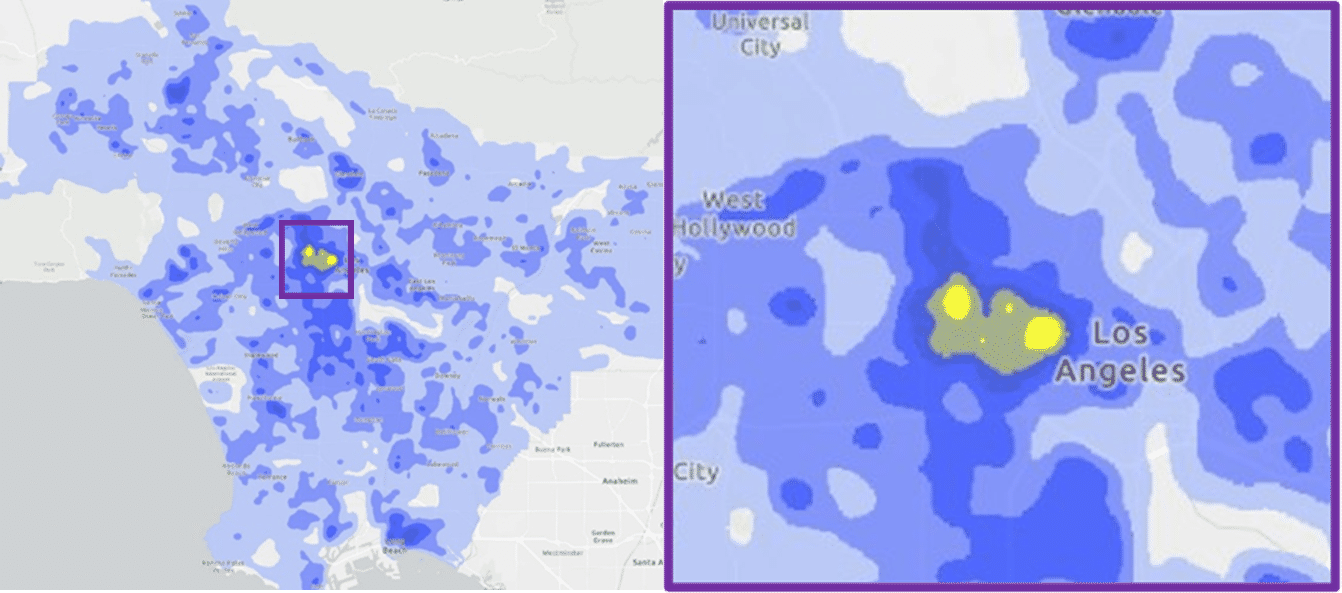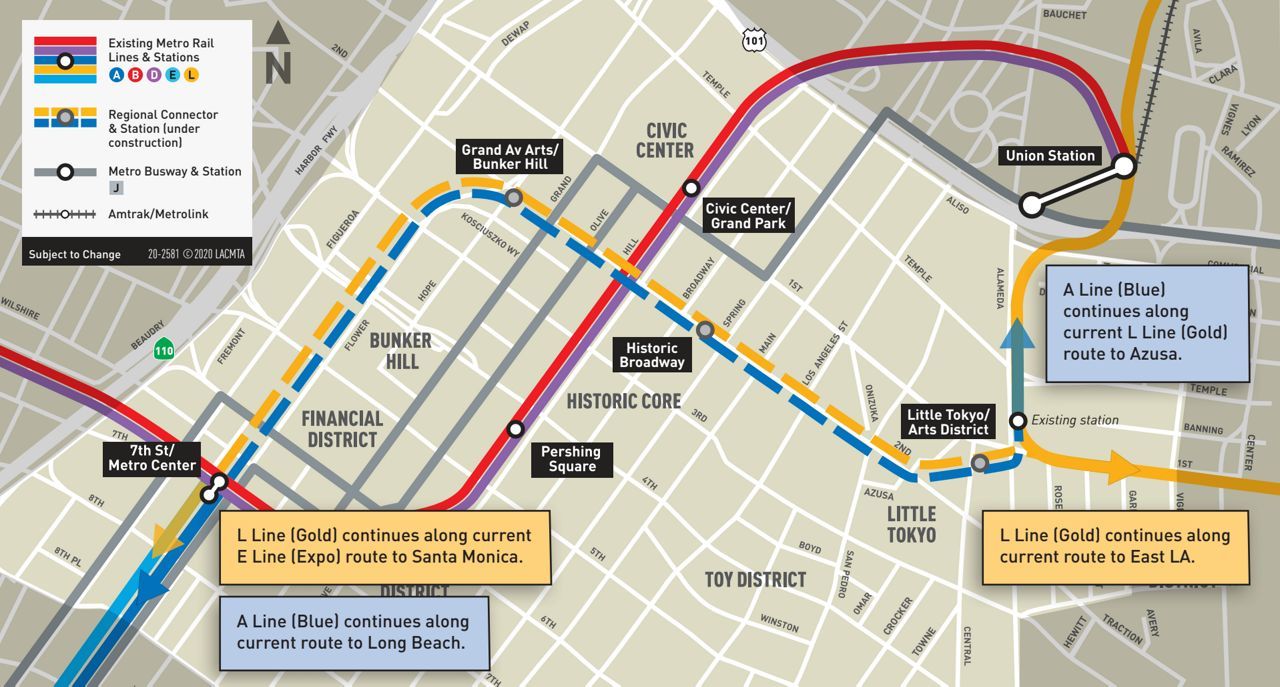Connecting the Region
To understand the importance of Downtown as a hub for the city and why the Regional Connector is such a significant project, it is critical to understand the nature of the region they both serve. While the common image of the LA is one of unending sprawl, closer examination instead reveals it as a multitude of activity centers – concentrations of population, culture, and commerce – spread across the city.
LA Region Activity Centers

And at the central point of that constellation of activity centers is Downtown, which has much higher concentrations of residents and businesses, as well as assets, amenities, and attractions than the rest of the region, and exerts a greater impact on it as well.
LA County – Population Density Map

A critical challenge for Los Angeles is that while hubs of activity bring people together in their own areas, the connections between its many communities are less robust and convenient, with lack of adequate transit to many of these locations limiting the potential for diverse, equitable, and inclusive access.
The Regional Connector helps address this issue by connecting four of LA’s light rail lines into one system and enabling one-seat travel to and through Downtown to a range of key destinations around the region.
Regional Connector Route

As a result of this new alignment, trips that used to require one or more transfers can now be completed without ever giving up your seat, making it substantially more convenient and reducing travel times.
New One-Seat Rides

The artist’s concept is drawn from fond childhood memories that evolved into a profound appreciation for the transit system, which contributed to the growth of LA County between 1901 and 1961.